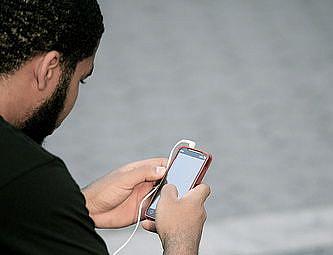Technology offers opportunities, challenges for enrolling underserved communities in health insurance

When it’s implemented, the Affordable Care Act will expand health insurance coverage to millions of people that are currently uninsured. Technology can make it easier to get some people enrolled, but not everyone is tapped into the Information Age for a variety of reasons, including financial and language barriers.
A new report looks at using health information technology for outreach and enrollment efforts, but in a manner that takes into account the digital divide. This will be critical in states like California, where about two-thirds of those newly eligible for health insurance programs will be people of color, and more than one-third will have limited English proficiency, according to the report.
According to the report, ‘Equity in the Digital Age: How Health Information Technology Can Reduce Disparities,’ by the Asian & Pacific Islander American Health Forum, California Pan-Ethnic Health Network, Consumers Union, and National Council of La Raza:
There are significant opportunities to improve access to care, enhance health care quality, and create targeted strategies that help promote health equity, especially combined with improved data collection. However, implementation of these advancements must be done in a manner that responds to the needs of all populations. Otherwise, the gaps in access and use that exist today could easily exacerbate disparities in health care access and outcomes for the most marginalized and under-served by our health system.
In a phone interview this week, Ellen Wu, executive director of California Pan-Ethnic Health Network, elaborated on the challenges and opportunities of using health information technology in health insurance enrollment.
Wu explained that the language of websites and mobile applications could become a barrier. California’s health insurance enrollment website will be translated into Spanish, she said, but there should also be at least a tag line on the home page, in Chinese and other common languages, that encourages non-English speakers to call a toll-free line for assistance.
“If you’re someone who speaks a language other than English, and you go online, there should be something you see that you can understand, so you know where to go for help,” she said. “That’s the same for the mobile application.”
Another challenge is ensuring that families of mixed-immigration status can use enrollment technology. “We’re concerned that enrollment is just built for the mainstream, and does not take into consideration the family circumstances,” Wu said.
The report elaborates:
An undocumented parent must be able to use a system to enroll his/her eligible child without being prohibited from using the system because the parent’s own status would fall outside the eligibility guidelines. ...These electronic forms should also only require information that is necessary to advance an application for the eligible family member and the system should pro-actively assure applicants that their data are protected and will not be shared with other government officials or law enforcement.
Another barrier is technology itself. While people of color and those with limited English proficiency are less likely to have Internet access at home, more are accessing the Web through their cell phones.
“If mobile strategies are developed with the mindset of increasing access, they have the potential to bridge historical gaps in outreach, education, communication, and engagement through devices literally in the hands of traditionally under-served populations,” according to the report.
This means that health insurance enrollment should be available not only online, but as a mobile app, Wu said. It also suggests, she said, that text messages could be an effective way of informing people about health insurance enrollment opportunities and deadlines.
Image by Alex. E. Proimos via Flickr

